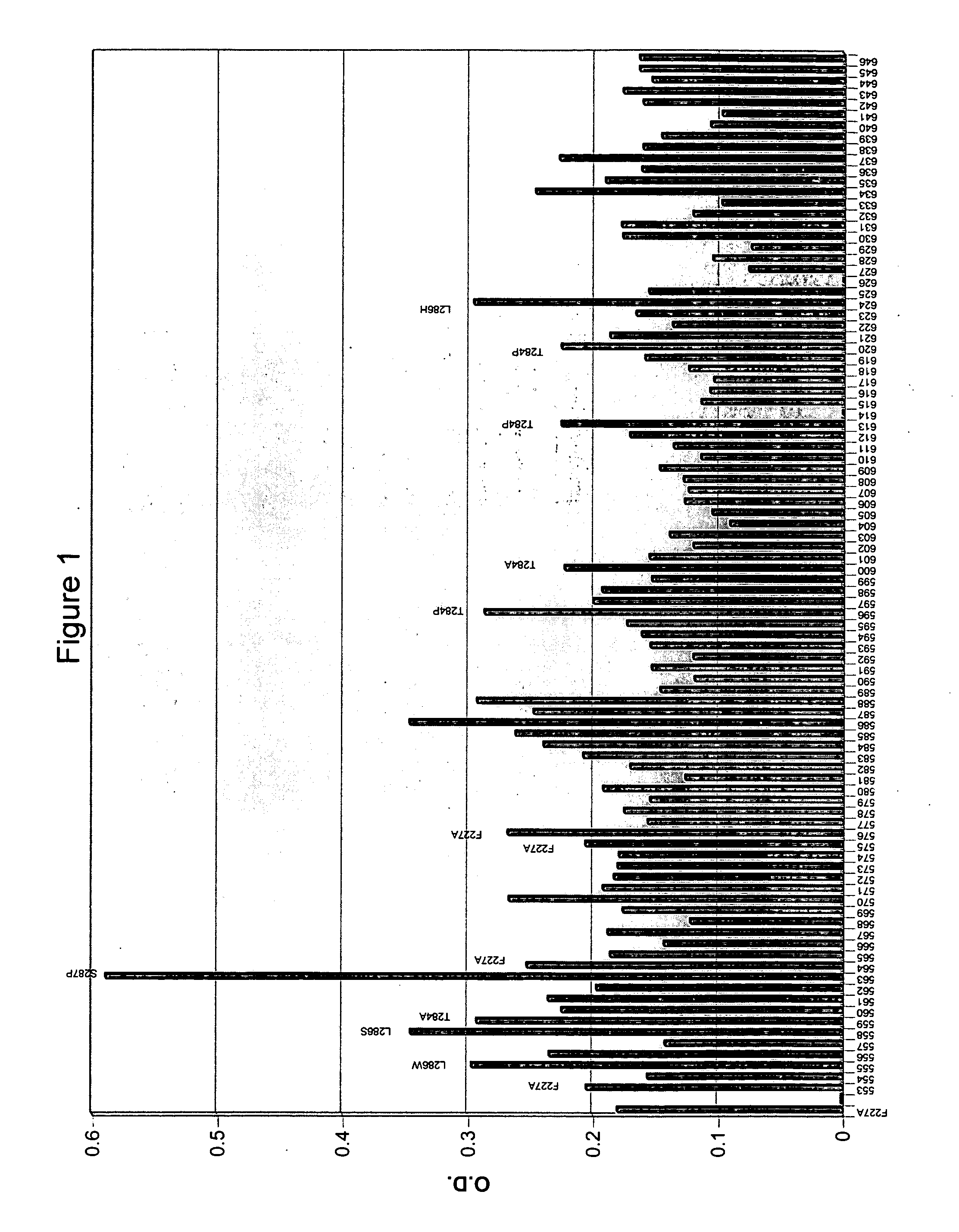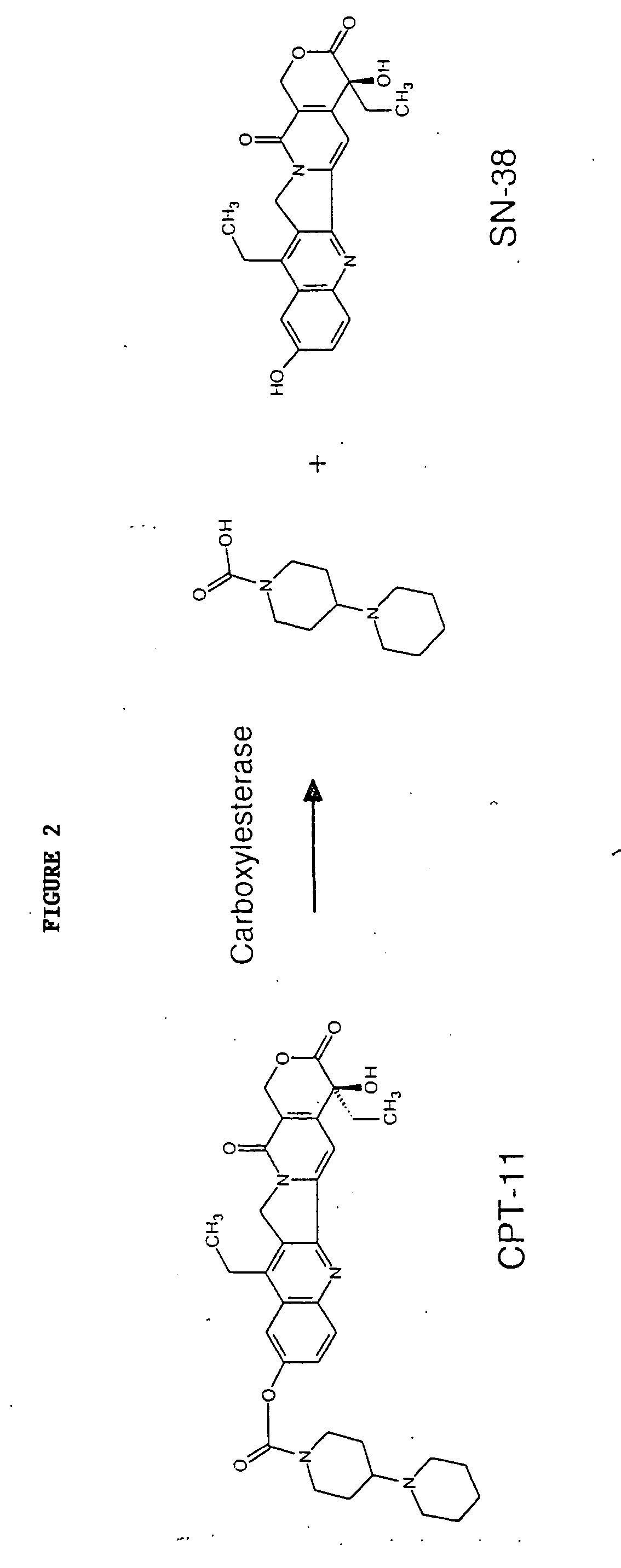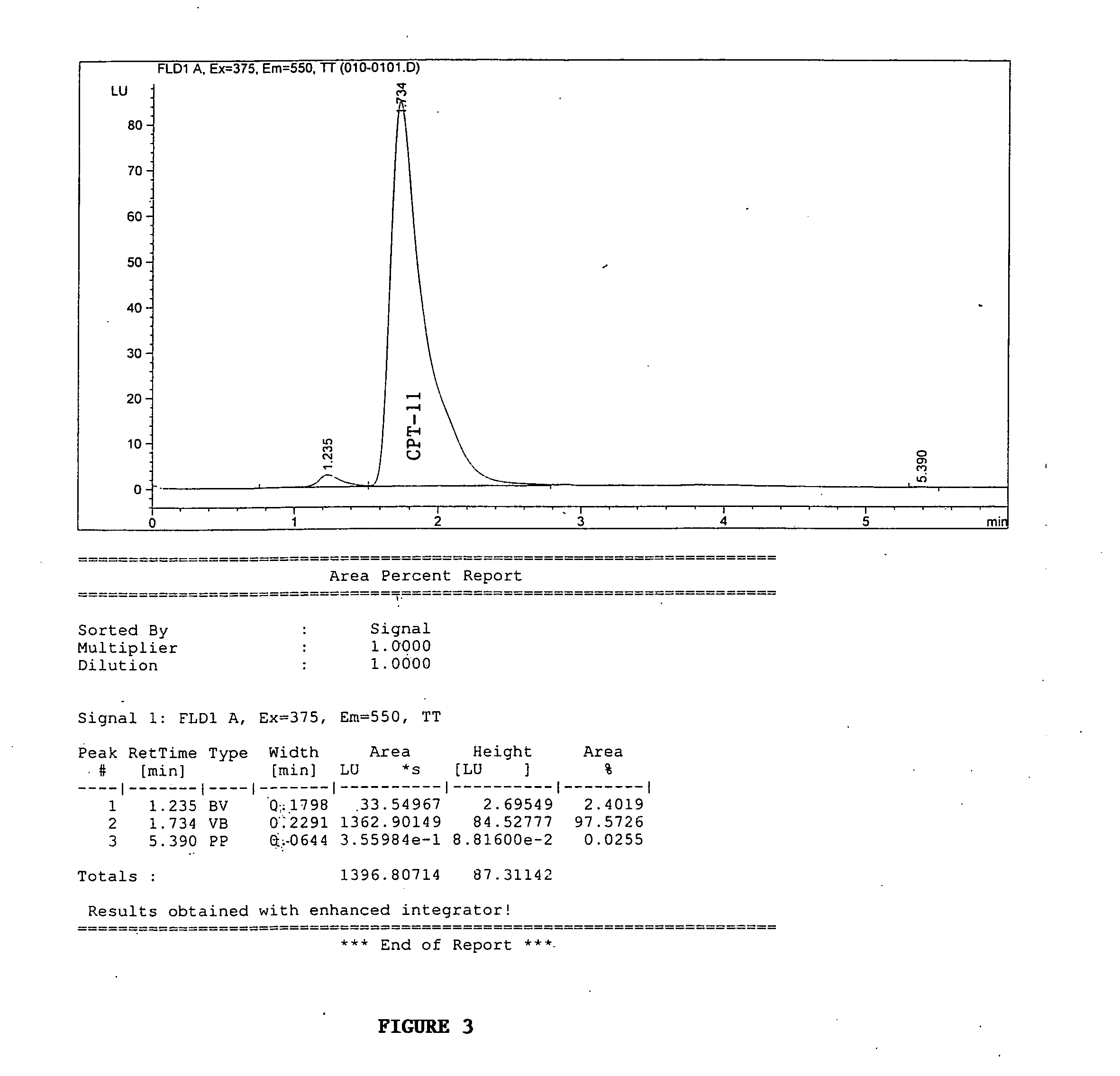Butyrylcholinesterase variants that alter the activity of chemotherapeutic agents
a technology of butyrylcholinesterase and chemotherapeutic agents, which is applied in the field of butyrylcholinesterase variants, can solve the problems of malignant tumor development, lack of specificity of cancer cells and numerous side effects, and the amount of radiation or chemotherapeutic agents that can be safely used is often insufficient to kill all neoplastic cells
- Summary
- Abstract
- Description
- Claims
- Application Information
AI Technical Summary
Benefits of technology
Problems solved by technology
Method used
Image
Examples
example i
Libraries of Butyrylcholinesterase Variants
[0117] This example describes the synthesis and characterization of butyrylcholinesterase variant libraries expressed in mammalian cells.
[0118] Initial libraries of butyrylcholinesterase variants were generated by mutating residues determined to be important for the catalytic activity of butyrylcholinesterase. Residues within butyrylcholinesterase that are potentially important for catalytic activity were determined by docking a substrate into the active site of butyrylcholinesterase with the FlexiDock program (Tripos Inc., St. Louis, Mo.) in Sybyl 6.4 software on a Silicone Graphics Octane computer. Residues important for catalytic activity were mutated using either PCR-based mutagenesis or codon-based mutagenesis as described herein and packaged into libraries.
[0119] Butyrylcholinesterase variant libraries were generated, for example, using PCR-site directed mutagenesis of human butyrylcholinesterase DNA performed utilizing Pfu polymer...
example ii
Carboxylesterase Activity of Butyrylcholinesterase Variants
[0129] This example shows carboxylesterase activity of several butyrylcholinesterase variants.
[0130] A standard assay for carboxylesterase activity is the o-nitrophenyl acetate (o-NPA) hydrolysis assay (see Beaufay et al., J. Cell. Biol. 61: 188-200 (1974)). A modification of this assay that measures o-NPA activity of butyrylcholinesterase variants normalized by capturing with an anti-butyrylcholinesterase antibody was performed as described below.
[0131] Protocol to Determine Carboxylesterase activity of Captured Butyrylcholinesterase by o-Nitrophenyl acetate: [0132] 1) Coat 96-well Immulon 2 plates with rabbit anti-human butyrylcholinesterase (Dako #A0032) at 10 mg / ml in PBS (100 ml / well) overnight at 4° C. [0133] 2) Remove coating solution and block plate with 3% BSA in PBS (250 ml / well) for 2 hours at room temperature. [0134] 3) Add 200 ml butyrylcholinesterase variant conditioned media and incubate at RT for 2 hrs. [0...
example iii
CPT-11 Conversion Activity of Butyrylcholinesterase Variants
[0143] This example shows butyrylcholinesterase variants that have increased CPT-11 conversion activity compared to butyrylcholinesterase.
[0144] Butyrylcholinesterase variants were assayed for CPT-11 conversion activity using fluorescent High Performance Liquid Chromotography (HPLC) detection of SN-38 formation as described in Dodds and Rivory, Mol. Pharmacol. 56: 1346-1353 (1999), which is incorporated herein by reference. The conversion of CPT-11 to SN-38 is shown in FIG. 2. Briefly, conditioned media from transiently expressed BChE variants were exposed to 20 mM CPT-11 for 72 hours at 37° C. and analyzed by HPLC for SN-38 formation (peak at about 4 minutes column retention time). FIG. 3 shows the amount of SN-38 produced using conditioned media from cells that were mock-transfected which means that the transfection was performed as usual however no DNA was added. FIG. 4 shows the amount of SN-38 produced using conditio...
PUM
 Login to View More
Login to View More Abstract
Description
Claims
Application Information
 Login to View More
Login to View More - R&D
- Intellectual Property
- Life Sciences
- Materials
- Tech Scout
- Unparalleled Data Quality
- Higher Quality Content
- 60% Fewer Hallucinations
Browse by: Latest US Patents, China's latest patents, Technical Efficacy Thesaurus, Application Domain, Technology Topic, Popular Technical Reports.
© 2025 PatSnap. All rights reserved.Legal|Privacy policy|Modern Slavery Act Transparency Statement|Sitemap|About US| Contact US: help@patsnap.com



